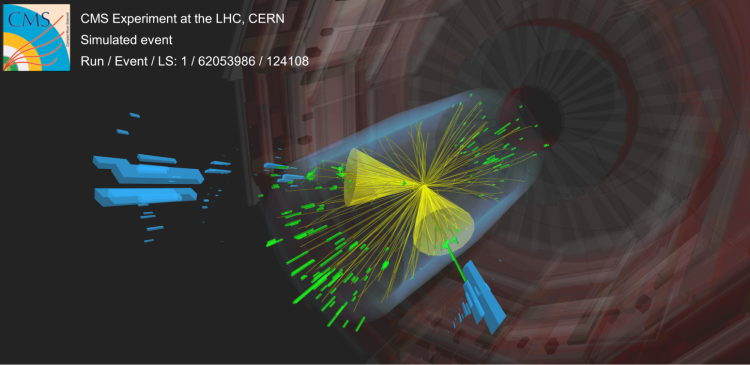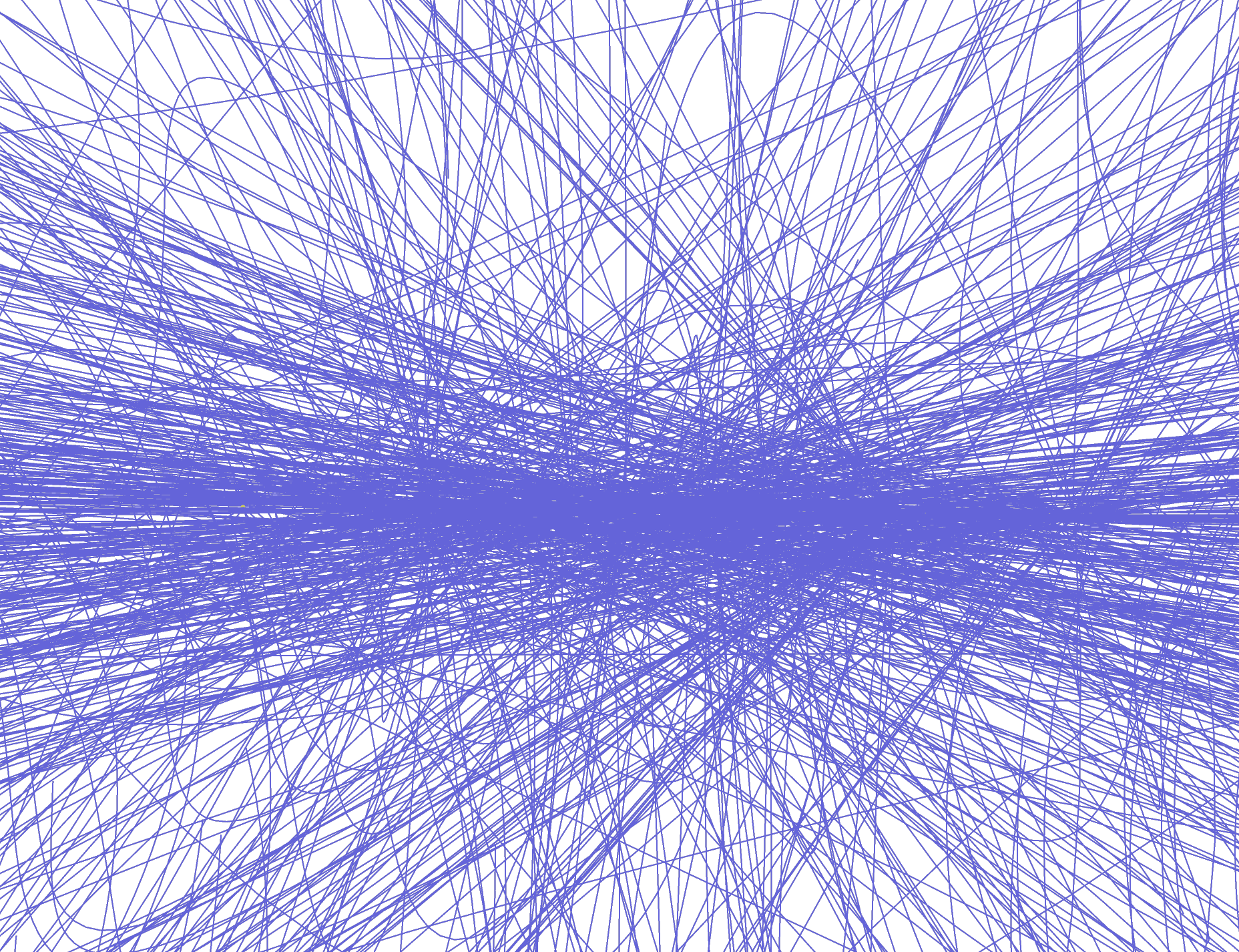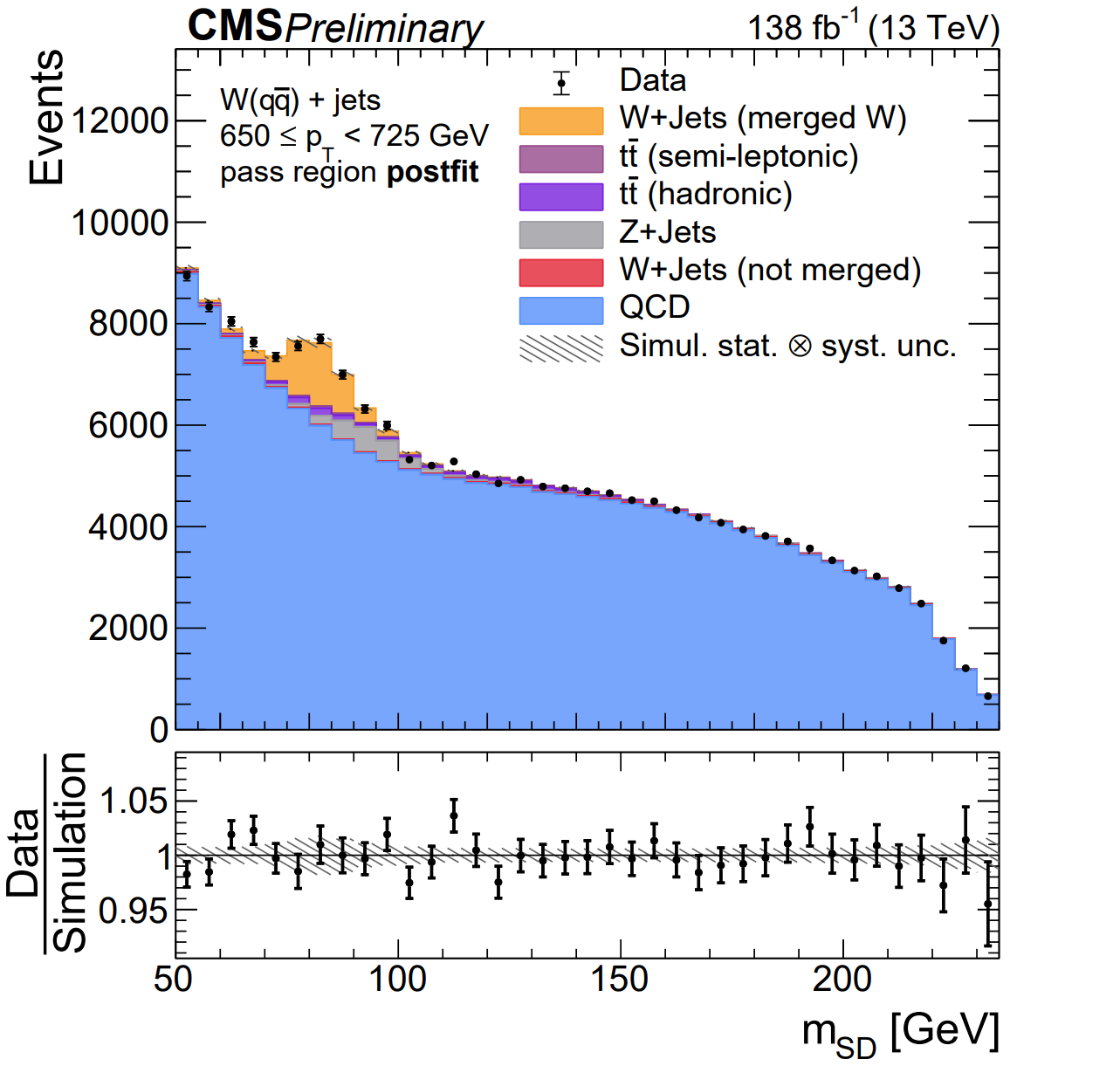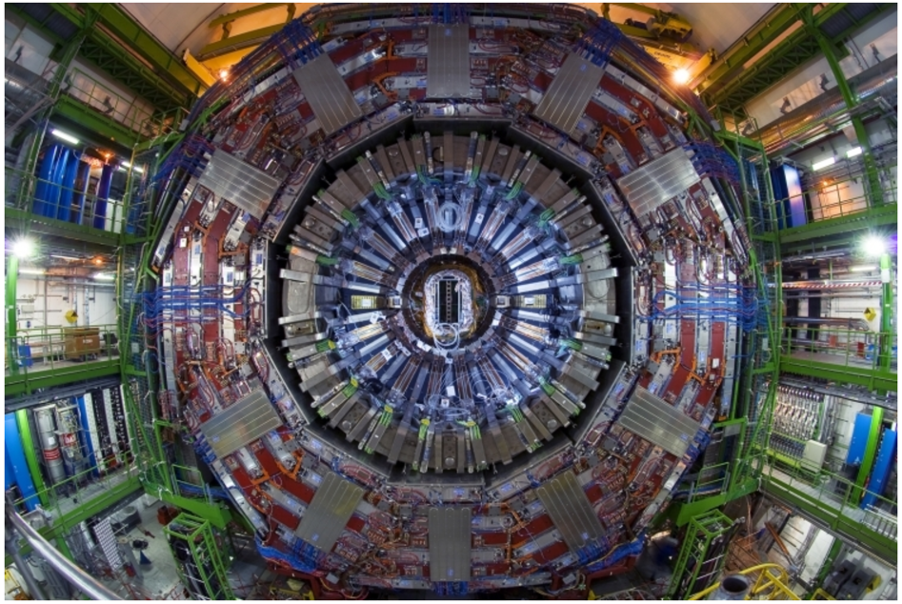
An interactive version of the event display is found on a separate, full page here.
For the first time at a hadron collider, the CMS experiment measures the mass of the W boson from hadrons.
Hadrons are particles made out of quarks and gluons, and hundreds of them are produced in each particle collision at the LHC. The CMS experiment has now successfully extracted the mass of the W boson using hadrons with a machine learning algorithm. Measuring the W boson’s mass in this dense and complicated environment, we showcase the success of theoretical calculations involved in this challenging process from production to detection.
W bosons are big players in the standard model of particle physics, famous for their ability to mediate radioactive decays, for their role in the fate of the universe, their friendship with the Higgs boson, and their participation in physics beyond what’s known. When we produce W bosons in particle collisions, they decay instantly. Thus, the only way to identify them is through their decay particles. From their decay to leptons, we have made very precise measurements of the properties of W bosons. However, their decay to quarks which in turn give jets (collimated sprays of hadrons) is much more abundant and equally critical when studying rare processes involving W bosons.
Finding W bosons in events containing only hadrons is extremely challenging. Firstly, the decay to quarks which form an undetermined number of hadrons through the strong force is a process that can only be approximated in today’s calculations of the standard model. Secondly, production of hadrons is extremely abundant at the LHC – collisions occur 40 million times per second, and each one, when processed and stored, has a size of around 1 Megabyte. Our storage capacity forces us to throw away most of them – we keep only those with large overall momentum. Thirdly, the few remaining W bosons we record are thus extremely fast. That speed creates a spray of hadrons from the decay that end up in a narrow jet around the flight direction. Those particles are close together, which makes them hard to resolve with the granularity of our calorimeter detector. Finally, there is what we call pileup – particles from other collisions that swamp each event with hundreds of other hadrons, and those particles also are there amongst the interesting hadrons from the W boson. The animated event display below demonstrates how busy such an event is.

Above: An event display of a simulated event demonstrating a busy collision event wherein a W boson forms a jet of hadrons that is identified during reconstruction.
Here is where machine learning comes into play. We developed a neural network to disentangle events with W bosons from other stuff by feeding the measured hadrons and their momenta in the form of a graph. After using the neural network to remove a large fraction of the background, we can see the peak of the W boson on top of the background as shown in the figure below. Steffen Albrecht, who completed his PhD at University of Hamburg, says: “Investigating how the performance of various detector components affected the precision of the measurement was the most challenging and interesting part. It's exciting to see the precision we achieved in all-hadron events.”

Above: Distribution of the measured mass (mSD) (black markers) compared to predictions from W bosons (orange) and backgrounds (other colors).
The resulting W boson mass, 80.77 ± 0.57 GeV or in units of daily life 1.4x10–24 kg, is consistent with previous measurements. More importantly, we confirmed theoretical models of hadron production from W bosons from production to detection, demonstrating the capability to explore W bosons in all-hadron events in the future. At the High-Luminosity LHC, successor of the LHC, scheduled to start operation in 2030, we plan to produce collisions at a larger rate. This will allow us to explore phenomena involving W bosons in rare, yet-unexplored processes.
Written by: Andreas Hinzmann, for the CMS Collaboration
Edited by: Muhammad Ansar Iqbal
Read more about these results:
-
CMS Physics Analysis Summary (SMP-24-012): "Measurement of the jet mass and W boson mass in hadronic decays of boosted W bosons at 13 TeV"
-
@CMSExperiment on social media: Bluesky - Facebook - Instagram - LinkedIn - TikTok - Twitter/X - YouTube

